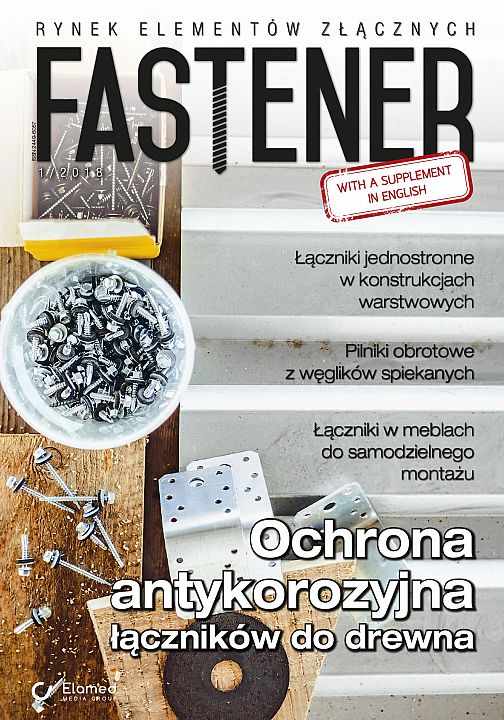Current Issue

This is the first issue of the Fastener magazine in this year. With the aim of the constant development, we added a section in English, which will help us reach an even bigger circle of Polish and international recipients. In this issue, we focused on the theme of the use of rivet joins of rivet jointsin sandwich panels; fasteners made of steels other than stainless steel and realase from first FASTENER FAIR in Poland but not only, you can find there the latest and most interesting news from the fasteners market and a lot of practical knowledge.
Market
The newest industry information.
The EU’s new trade defence rules first country report
On 5th December the European Union implemented important changes to it's anti-dumping and anti-subsidy legislation and the European Commission published a report on state induced distortions existing in China.
An Oscar-worthy opening
The first edition of the International Trade Fair for Fastener and Fixing Technology – FASTENER POLAND, which took place on 28-30 November 2017, fulfilled the expectations of even the most demanding visitors.
Fastener Fair Italy 2018 - bigger and better
There’s keen industry interest in Fastener Fair Italy 2018, which takes place on 26 and 27 September 2018 and is set to be even bigger and better than the first event two years ago. Fastener Fair Italy 2018 is being held at MiCo – Milano Congressi in the centre of Milan.
The Taiwan International Fastener Show 2018
The Taiwan International Fastener Show, the third largest exhibition of it's kind in the world and the second largest in Asia, will be held at the Kaohsiung Exhibition Center on Tuesday, April 10 to Thursday, April 12, 2018.
LEASING - a modern way of financing
The popularity of leasing as a method of funding business investment projects is on the increase. In the past year alone, the value of projects financed in this way was PLN 58.1 billion. This form of financing is most frequently used by enterprises operating in the construction, transport and production sectors.
The use of rivet joints in sandwich panels
The article presents the results of pilot studies concerning sandwich panels joined by blind rivets subject to axial tension. The studies consisted in analysing the impact of fastener type (Bulb-tite rivets and Fab-Lok rivets), sandwich panel skin type (steel and GFRP) and position of the steel skin in relation to primer layer. The results (summarised in a table) highlighted the following failure mechanisms: delamination of steel skin, reaching core tension resistance and skin breakage. The results shown in the table are promising. In the author’s opinion, continuation of initiated pilot studies is justified.
Materials used for the production of bolts and nuts – part II. Fasteners made of steels other than stainless steel
Properties of stainless steels used for the production of bolt and nut assemblies were discussed in the paper along with performance characteristics of these assemblies. In this part, properties and scope of application of bolts and nuts made of steels other than stainless steel are presented. Various fasteners made of non-ferrous metals and plastics shall be discussed in a separate paper.














